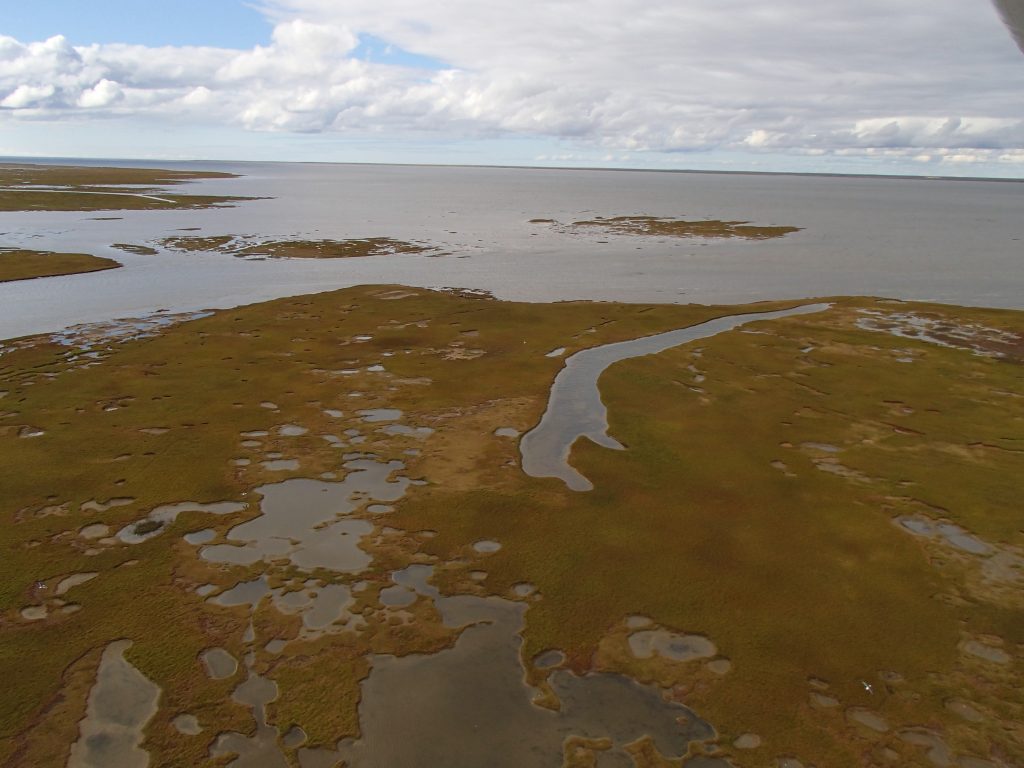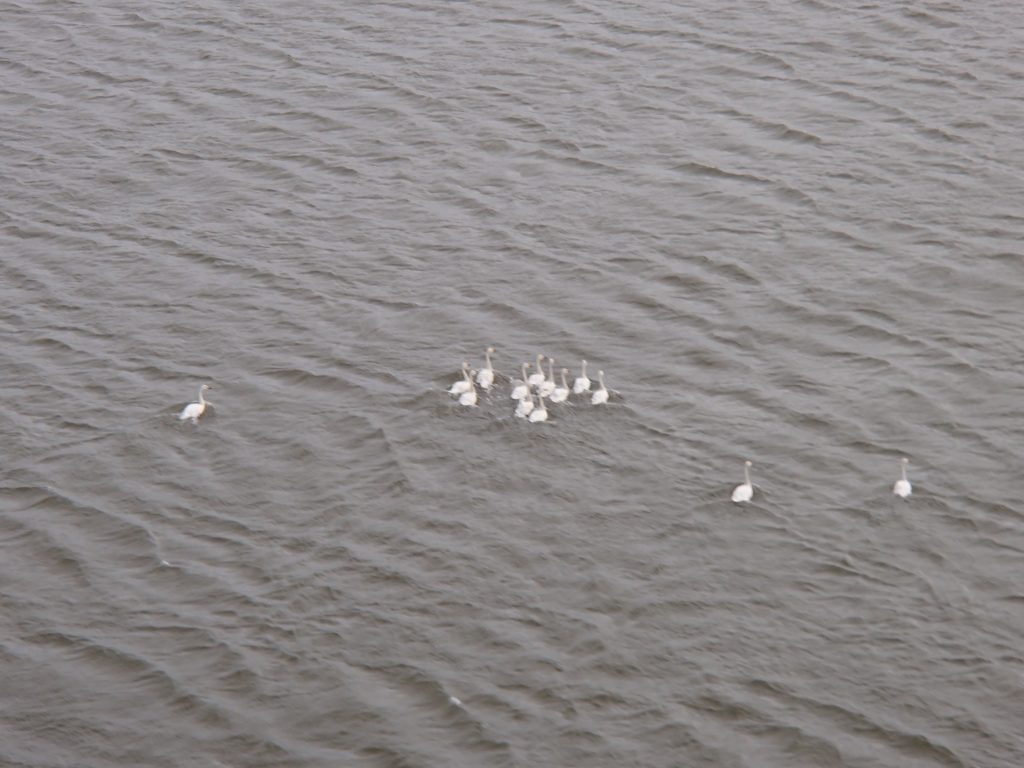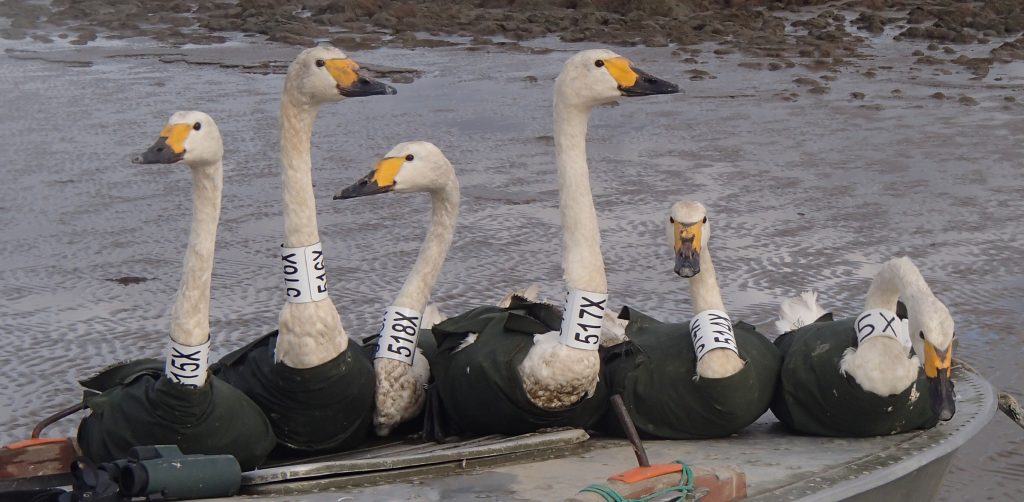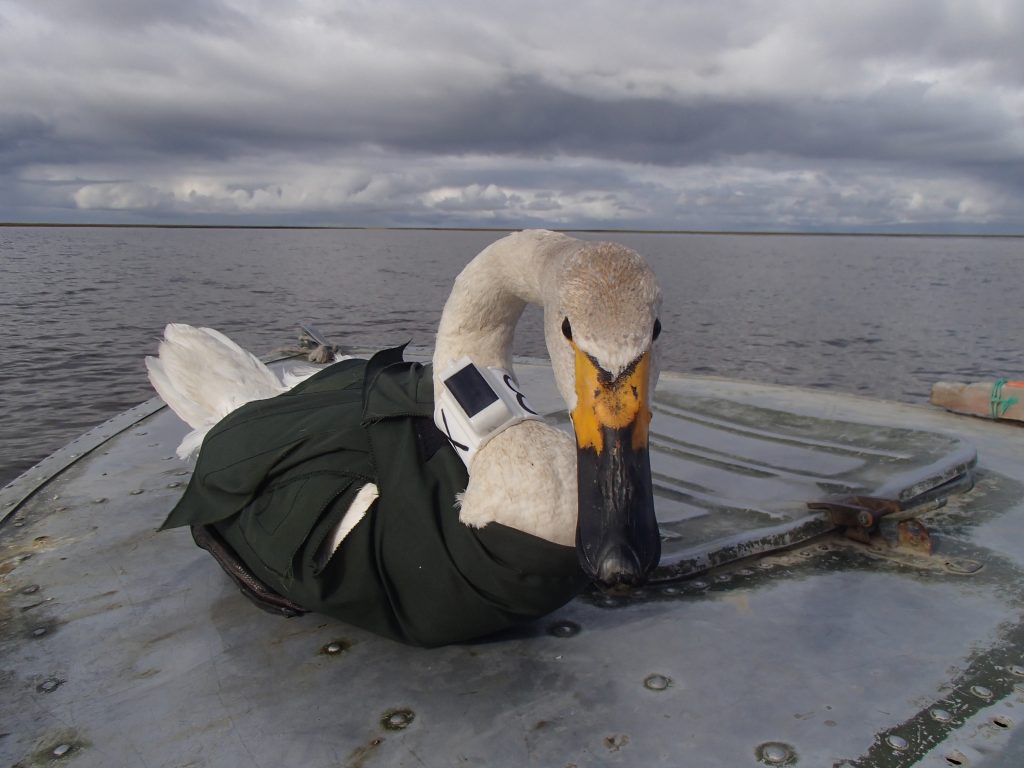The aerial survey of the estuary of the Yuribey river conducted in Augustus 2015 detects the presence of circa 100 Bewick’s Swans in flightless moult.


This period is crucial for the swans and for all waterfowl. Like every bird species they have to renew annually their plumage. Indeed feathers wears out rapidly by the effect of sunlight (UV) degradation and mechanical process. To replace them regularly is thus a question of survival. But the process is very particular among swans, geese and ducks because they moult simultaneously all the flight feathers and are thus unable to flight for several weeks. This is the flightless moult. It is a period when they may be caught relatively easily for ringing. And it is what we did.
Altogether we caught and marked in Yuribey Delta 23 Bewick’s Swans and 1 Whooper Swan. The last breeds in the taiga and is as far as known rare in the tundra. Among the Bewick’s were 10 adults (5 females + 5 males). These birds were hatched at least in spring 2014. Thirteen yearlings (6 females + 7 males) were also caught and ringes. Yearling is the name given to a swan hatched the previous year.
Every swan was marked with a ring of the Bird Ringing Centre of Russia and a white neck-collar engraved with a 4 digits unique code allowing individual identification at distance.

Six swans were moreover equipped with a satellite transmitters allowing their tracking along the migration route. These devices weigh 22 g and are attached to the neck-collar. They are produced by the Polish company ECOTONE-TELEMETRY and record GPS positions at regular interval – to be determined at request – that are later send via the GSM network. It is thus possible to track nearly in live time the route taken by the tagged bird, to identify its stopover places, to understand its migration strategy, to connect breeding sites to wintering sites and much more.

Here is the id card of each Bewick’s Swan equipped with a satellite tag :
| Id | Maturity | Sex | Date | Weight |
|---|---|---|---|---|
| 801X | adult | male | 12/08/2015 | 6.4 kg |
| 820X | adult | male | 12/08/2015 | 6.9 kg |
| 832X | adult | female | 12/08/2015 | 5.9 kg |
| 843X | yearling | male | 13/08/2015 | 6.8 kg |
| 854X | yearling | male | 14/08/2015 | 6.5 kg |
| 865X | yearling | female | 14/08/2015 | 5.5 kg |
Thank you to the staff of ECOTONE-TELEMETRY for the continuous development of such efficient loggers.
